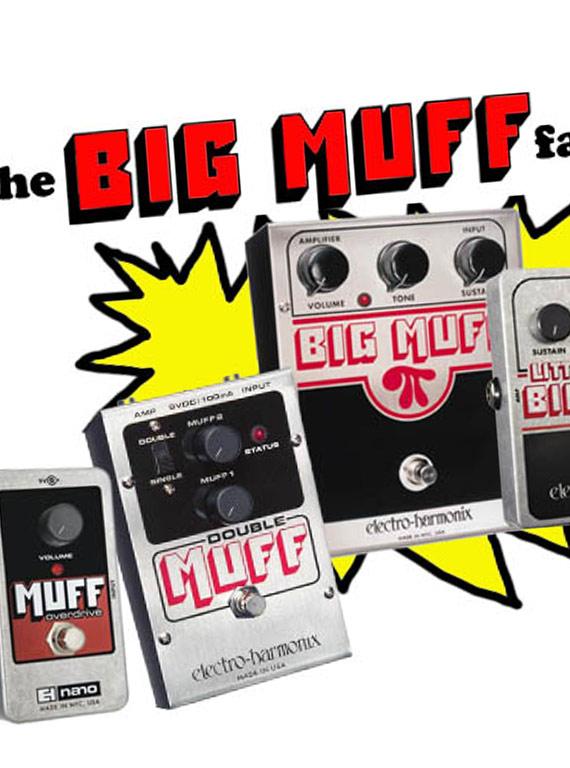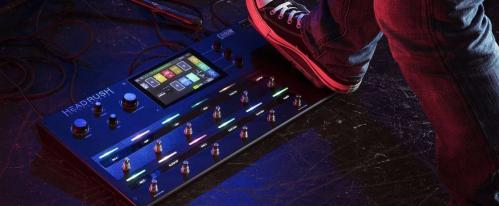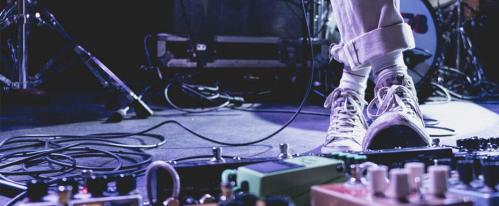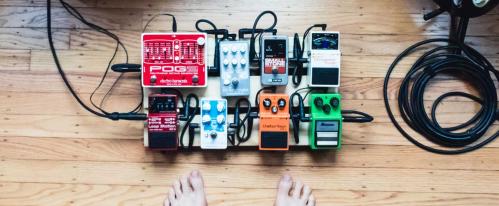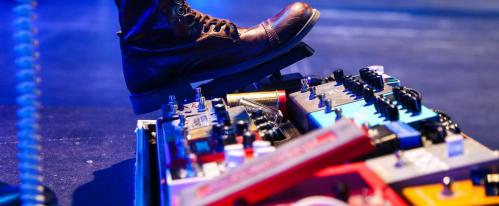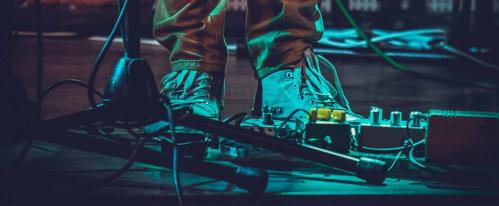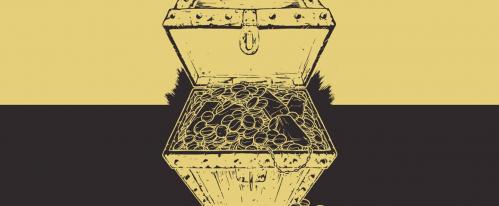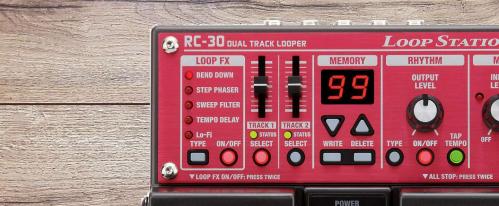From Jimi Hendrix to the first Muff, From New York to Russia, from Pink Floyd to the White Stripes...here's the story of the world's favourite fuzz pedal, and a look at the whole Muff family available today!
If today distortion pedals (such as the Boss DS-1 and DS-2, Pro Co RAT etc) are usually the most popular, in the 60's it was all about fuzz. Once Dave Davies made the fuzzy guitar sound popular with The Kink's "You Really Got Me", the gates were open for a new - and louder - era in rock'n'roll!
Some of the first fuzz boxes to become popular were the Maestro Fuzz (used by The Rolling Stones on "Satisfaction"), the Tone Bender (used by Jeff Beck in The Yardbirds) and the Fuzz Face, made famous by Jimi Hendrix.
The First Muff
In 1968 Mike Matthews founded Electro-Harmonix, and amongst their first inventions was a tiny fuzz box called the "Muff Fuzz". The Muff Fuzz was the original Muff, and is today incredibly collectible.
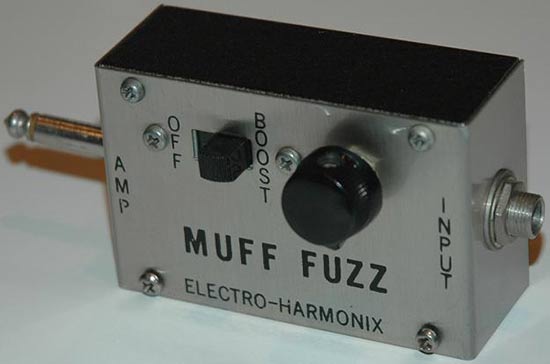
The Muff Fuzz has been reissued by Electro-Harmonix, in the shape of the nano Big Muff Pi. This simple and affordable pedal offers a pure vintage sound and is a faithful reproduction of the original Muff.The box couldn't be simpler: an on/off switch and a gain control.
Even better, is the Double Muff, which brings together, in one box, two Muff Fuzz circuits, meaning double the sound! On "double mode", with gain to the max, the Double Muff can do a good Big Muff impersonation, very White Stripes-y. This pedal is already a classic in its own right, and, alongside the Muff Overdrive, they are only new Muffs not inspired by the Big Muff, but by the original Muff Fuzz.

The Double Muff is great for simple, vintage fuzz tones, with no tone control - raw, loud, with a silky overdriven tone. Because of this, they'll work much better on valve amps.
Contrary to myth, the Big Muff was not used extensively by Jimi Hendrix and, in fact, production models were not available until 1971, a year after Hendrix's death in 1970. But Big Muff creator Mike Matthews has claimed that Hendrix used a Big Muff prototype in some sessions prior to his death and he was reportedly impressed enough to want to use it on his next album. Hendrix played an integral part in the making of the Big Muff, as Matthews has often stated that Hendrix's guitar sound was the inspiration for the creation of the Big Muff.
An earlier EH pedal, the Axis fuzz was also manufactured by EH for the Guild guitar company as the Foxey Lady and used a similar chassis as the early Big Muffs but had a simpler two-transistor circuit. You can see by the picture that the Electro-Harmonix Axis Fuzz had a similar chassis to the modern Big Muff, but only two knobs (volume and fuzz) like all the classic fuzz pedals of the sixties.
With the introduction of the Big Muff the Axis was discontinued and the Foxey Lady pedal became a rebranded Big Muff. It was available at least until the mid '70s.
The Big Muff was immortalised with Mudhoney's legendary release Superfuzz Bigmuff in the nineties but amongst the first Big Muff users we can mention David Gilmour, Carlos Santana, John Lennon, Frank Marino and others.
Graphics were jazzed up and screened in red (rare in blue). This variation also has a goofy face in the lower right-hand corner; sort of a Tolkienesque thing with hair that looks like ivy. This has been referred to as a "sheep's face" but sheep around here don't look like that....The first version was a chrome bent-sheetmetal box 4 1/2 w by 6" long with a black finished aluminum bottom. The angled top featured three knobs (volume, sustain, and tone) in a triangular pattern and an on/off switch for the battery in the upper left hand corner. Jacks were on the far end; graphics were minimalist, silk screened in black. By 1973 or early '74 the size had been increased to 5 1/2 " x 7", the knobs were now in a straight line across the top, and the battery switch was moved to between the jacks.
Circa '76-'77 the Big Muff made its final costume change; the logo was now inch high red letters with a shadowed effect. Control function type was in black; there was also a large black, solid block of ink around the foot switch (this was dropped from the design on some of the last big muffs made around 1984).
The first pedals with this design had the battery switch but soon a switching input jack was used and the switch became a bypass for the tone control. Around 1978 some B-Muffs were made with a circuit using 741 Op-amps instead of the usual four transistors. This design had one less gain stage, losing some essence of Muff and was discontinued after a couple of thousand were produced.
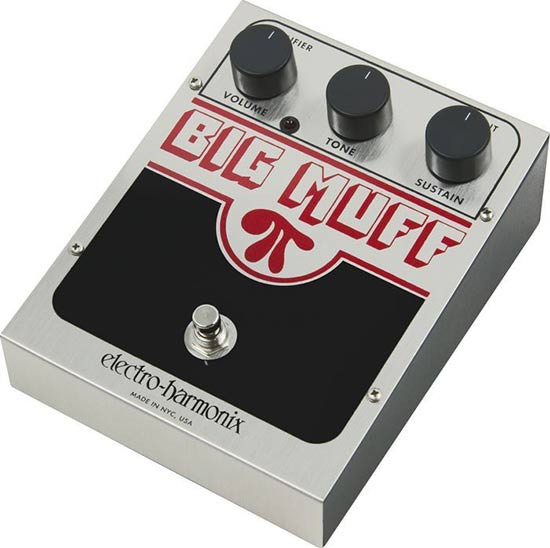
It's hard to find a band who's never used a Big Muff: from Black Keys to Muse to Red Hot Chili Peppers, from U2 to The White Stripes, everyone seems to love the Big Muff, and the wide range of artists of all styles who play the Big Muff displays this pedal's tonal versatility. It's simply superb...and, best of all, it's still quite cheap! Today the Big Muff is the world's most popular fuzz pedal, no question about it! In the late 80's and early 90's, it became *the* grunge pedal of choice: it inspired the title of Mudhoney's debut album 'Superfuzz and Big Muff' and was used by bands such as Dinosaur Jr., Sonic Youth and Nirvana.
Electro-Harmonix thinks one Big Muff is not enough, and recent new models subtract or add to the classic Big Muff design, offering features to fit all kinds of players. Here's a look at the new versions of the Big Muff:
Little Big Muff
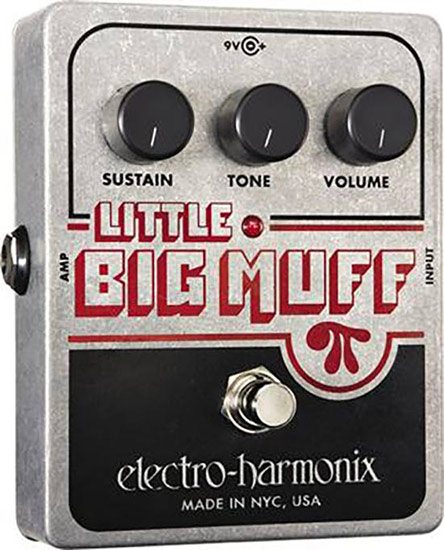
The Little Big Muff uses the same circuitry of the Big Muff. If you like the Big Muff, you'll like the Little Big Muff! The only difference is the size...you get the same power of the Big Muff, but in a smaller, die cast package. If you don't care about the classic Big Muff look and needs more space in your pedalboard, the Little Big Muff is your choice. By no means it's a "lesser" pedal. In fact, some top artists such as Jamie Cook of the Arctic Monkeys, started with a Big Muff and switched to the Little Big Muff.
Bass Big Muff Pi

A smoother, creamier Big Muff, in part inspired by the sough-after green Russian Big Muff, by Sovtek. However, this new model has been tailored for bass and has stereo outputs and a bass boost function. There was simply no way the Bass Big Muff could go wrong, and its instant success is proof of that. It's a well known fact that Big Muffs work great with bass guitars...and this new Bass Big Muff is definitely the best option, finally giving bassists a Big Muff made specially for them. About time!
Big Muff Pi with Tone Wicker

This cool, white Big Muff is already incredibly popular, adding new features to the classic Big Muff sound. You can switch the tone knob off for a purer fuzz sound, or use the wicker to boost the treble a bit...a good feature for those who think the tone of the original Big Muff can get too "muddy". The Big Muff Pi with Tone Wicker sounds like a true Big Muff...but offers much more!
Metal Muff

The Big Muff of choice for metalheads! For heavy metal, shredding rock'n'roll gods, no Big Muff will sound better than the Metal Muff. Why? It offers more EQ possibilities than any other muff (hi / mid/ low) and also a top boost feature. For maximum power onstage, nothing will beat the Metal Muff...it's the ultimate pedal for heavy metal distortion! Check the product page and watch the demo!
Watch our Big Muff Comparison Video below
Watch our Big Muff Bass comparison:

